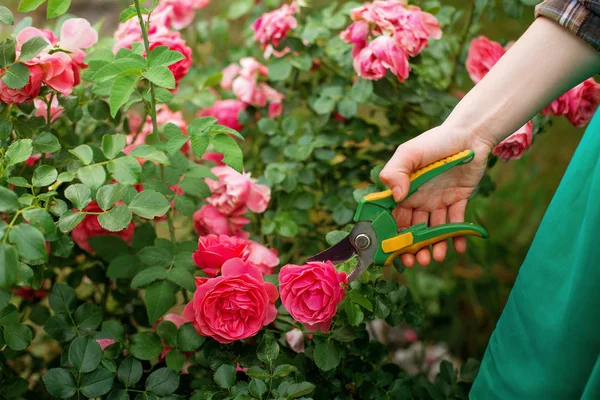Pruning shrub roses is an essential gardening task that promotes healthier plants and abundant blooms. Unlike more delicate rose types, shrub roses are hardy, vigorous, and adaptable, making them a favorite for both novice and experienced gardeners. However, without proper pruning, these plants can become overgrown, produce fewer flowers, or become susceptible to disease.
Understanding the correct pruning techniques can help you shape your shrub roses for optimal growth and spectacular flowering. In this guide, you’ll learn when, why, and how to prune shrub roses effectively throughout the year to enjoy a vibrant, flourishing garden.
Understanding Shrub Roses and Their Growth Patterns

Shrub roses form a broad category of roses characterized by their dense, bushy growth and strong, woody stems. Unlike hybrid teas or floribundas, which tend to have more upright, compact shapes, shrub roses often develop wider, sprawling habits that can fill larger garden spaces naturally. Their hardiness and disease resistance make them particularly suited to low-maintenance gardens, offering reliable performance even in less-than-ideal conditions. Many varieties are bred for landscape use, providing year-round structure and repeated floral displays without demanding intensive care.
The growth pattern of shrub roses is marked by multiple blooming cycles throughout the growing season. Flowers typically appear in clusters along the mature canes, which are robust enough to support heavy blooms. Because of this, pruning strategies focus on removing old or weak wood to encourage fresh, vigorous shoots where new flowers will form. Recognizing how these plants grow and bloom helps gardeners decide when and where to make cuts, ensuring a balanced shrub that produces abundant, continuous blooms and maintains healthy structure.
Why Prune Shrub Roses?
Pruning shrub roses brings many benefits essential for healthy plants and abundant blooms. The main reason to prune is to encourage more flowers. Removing old, woody stems and spent blooms redirects the plant’s energy to new, vigorous shoots that produce flower buds later, extending the bloom period and increasing flower quantity. Without regular pruning, shrub roses tend to flower less and look sparse.
Pruning also supports overall plant health. Dead or diseased branches can harbor pests and infections that spread quickly. Removing these improves airflow within the shrub, reducing risks of fungal diseases like black spot and powdery mildew, especially in humid or crowded conditions.
Controlling size and shape is another key reason to prune. Without trimming, shrubs can become leggy with long, weak stems that harm appearance and reduce blooms. Cutting back promotes a compact, balanced shape and prevents the plant from crowding neighbors. Thoughtful pruning keeps shrub roses thriving, flowering heavily, and looking great year after year.
When to Prune Shrub Roses
Proper timing is crucial to pruning shrub roses for healthy growth and abundant blooms. Early spring is the best time for major pruning, as the plants are still dormant or just starting to wake, with buds beginning to swell. Pruning at this stage removes old, woody stems and shapes the shrub, encouraging strong, vigorous shoots that will produce plenty of flowers. Delaying pruning too long can reduce flowering since the plant shifts energy to existing growth.
Light pruning and deadheading during the growing season help extend the bloom period. Removing spent flowers prevents seed formation and encourages the rose to produce more blooms. This regular maintenance keeps shrubs tidy and promotes continuous flowering. It’s also a good time to trim small, weak, or crossing stems to improve air circulation and overall plant health.
Fall pruning is generally gentler and focuses on removing dead, diseased, or damaged wood to prevent pest and disease problems over winter. Avoid heavy pruning late in the season, as it may trigger tender new growth vulnerable to frost damage. In colder regions, applying mulch or other protective measures after light pruning helps insulate the plant, ensuring it survives winter and thrives again in spring.
Tools Needed for Pruning Shrub Roses
Using the right tools is vital for effective pruning and the health of your shrub roses. Sharp, clean pruning shears are essential for making precise cuts that heal quickly and reduce plant stress. Bypass pruners are preferred because they produce cleaner cuts on living wood compared to anvil pruners. For thicker branches, loppers provide extra leverage, allowing smooth, controlled cuts without damaging the shrub.
When branches become very thick or woody, a pruning saw designed for garden use is recommended. This helps avoid splintering, which can create entry points for disease. Protective gloves made of durable leather or thorn-resistant material are important to protect your hands from scratches and punctures.
Proper maintenance of your tools is just as crucial. Always disinfect your pruning equipment before and after use with rubbing alcohol or diluted bleach to prevent disease spread. Keep blades sharp since dull tools can crush or tear stems, increasing infection risk and slowing healing. Regular sharpening ensures clean cuts, making pruning easier and more efficient. Well-maintained tools ultimately support the health and longevity of your shrub roses, helping them flourish year after year.
Step-by-Step Guide to Pruning Shrub Roses
Step 1: Assess the Plant
Begin your pruning by thoroughly examining the shrub rose from all angles. Take note of any dead, diseased, or damaged wood that needs to be removed. Look closely for branches that cross or rub against each other, as these can cause wounds and invite pests or diseases. Also observe if the plant is overcrowded with too many canes growing inward, which can restrict airflow and light penetration. This careful assessment will guide your pruning decisions and ensure you target the right areas.
Step 2: Remove Dead and Diseased Wood
Using sharp, sterilized pruning shears, carefully cut out all dead, blackened, brown, or soft stems. Make cuts at the base of these canes or just above a healthy, outward-facing bud to encourage outward growth. Removing this unhealthy wood is critical because it can harbor fungi and pests that threaten the entire plant. This step helps improve the shrub’s overall vigor and disease resistance.
Step 3: Thin Out Overcrowded Canes
Shrub roses require good air circulation to stay healthy and bloom well. Identify the oldest, weakest, or most congested canes and remove them to open up the center of the shrub. Thinning out these stems reduces humidity inside the plant, which lowers the risk of fungal diseases like black spot and powdery mildew. It also directs the plant’s energy toward producing stronger, more productive new shoots.
Step 4: Shape the Plant
Once dead and overcrowded wood is removed, focus on shaping the shrub into a balanced, attractive form that fits your garden space. Cut back the remaining healthy canes to about a quarter inch above an outward-facing bud. This encourages new growth to spread outward rather than inward, improving light exposure and airflow throughout the plant. Aim for an open vase-like shape to maximize both beauty and plant health.
Step 5: Cut Back for Size Control
Finally, prune to control the shrub’s overall size and encourage fresh growth. Depending on the specific variety and how large you want the plant to be, reduce the height and width by up to one-third. This not only keeps the shrub manageable but also stimulates vigorous new canes that will produce abundant blooms. Regular size control pruning prevents the shrub from becoming leggy or overcrowded and helps maintain a tidy, healthy appearance year after year.
Pruning Tips for Different Shrub Rose Types
Modern Shrub Roses
Modern shrub roses, such as the popular Knock Out® series, are known for their disease resistance and vigorous growth, requiring only minimal pruning. For these varieties, the main focus is on removing spent flowers throughout the growing season to encourage continuous blooming. In early spring, a light shaping prune helps maintain a neat form without cutting back too harshly, allowing the plant to retain its natural, bushy habit.
Old Garden Roses
Old garden roses, which typically bloom once per season, need a different approach. Heavy pruning in early spring can remove developing flower buds, so it’s best to prune these roses lightly after they finish blooming. This post-bloom pruning helps maintain the plant’s shape and removes any damaged or crossing branches while preserving the next season’s flowers.
Rugosa Roses
Rugosa roses are prized for their hardiness and ability to thrive in poor soil conditions. Their pruning needs are generally simple and straightforward. Early spring is the ideal time to prune, focusing mainly on removing dead, damaged, or diseased wood. Light shaping can be done to maintain an attractive form, but rugosas usually require less pruning than other shrub rose types. Their robust nature often means they bounce back easily from minimal trimming.
Aftercare Following Pruning
Cleaning Up and Disposal
After pruning, it’s important to clear away all cut stems, leaves, and debris from around the base of your shrub rose. Leaving pruned material nearby can increase the risk of disease and pests spreading to the plant. Dispose of any diseased or damaged wood carefully by discarding it in the trash rather than composting, as compost piles may not reach temperatures high enough to kill pathogens. Proper cleanup helps maintain a healthier garden environment and reduces future problems.
Feeding and Mulching
Once pruning is complete, apply a balanced rose fertilizer or a generous layer of organic compost to provide essential nutrients for vigorous new growth. This feeding supports the plant as it recovers and encourages abundant flowering. Adding mulch around the base of the shrub helps retain soil moisture, regulates temperature fluctuations, and suppresses competing weeds. Use organic materials like shredded bark, straw, or leaf mold, but keep mulch a few inches away from the rose’s crown to prevent rot.
Watering
After pruning, maintain consistent soil moisture to help new shoots develop strong roots and healthy growth. Water deeply and evenly, allowing moisture to reach the root zone rather than just the surface. Avoid overwatering or waterlogging, as soggy soil can cause root rot and other issues. Adjust watering frequency based on weather conditions, increasing during dry spells and reducing when rainfall is sufficient. Proper hydration ensures your shrub rose recovers quickly and thrives throughout the growing season.
Common Mistakes to Avoid When Pruning Shrub Roses
One frequent mistake is pruning too late in the season. Waiting until buds have fully developed or new growth is well underway can reduce flowering because you may accidentally remove the shoots that would produce blooms. It’s best to prune in early spring when buds just begin to swell for optimal results.
Another error is over-pruning. Cutting back too severely can stress the plant, leading to weak growth and fewer flowers. While it’s important to remove old or damaged wood, excessive pruning can also expose the shrub to sunburn or frost damage, especially if done late in the season.
Failing to use clean, sharp tools is a common problem that can cause ragged cuts, making the plant vulnerable to pests and diseases. Always disinfect your pruning shears before and after use, and keep blades sharp for clean, precise cuts that heal quickly.
Ignoring the need to thin overcrowded branches can result in poor air circulation, which increases the risk of fungal diseases like black spot and powdery mildew. Removing crossing or crowded stems improves airflow and overall plant health.
Lastly, neglecting aftercare such as cleaning up pruned debris, watering properly, and feeding the plant can limit recovery and bloom production. Proper post-pruning care is essential for helping shrub roses thrive and produce abundant flowers year after year.
Benefits of Regular Pruning for Shrub Roses
Enhanced Flower Production
Regular pruning stimulates new growth by removing old, woody stems and spent blooms. This process directs the plant’s energy toward producing fresh shoots, which develop more flower buds. As a result, shrub roses bloom more frequently and produce larger, healthier flowers throughout the growing season. Consistent pruning also helps prevent the plant from becoming overgrown and unproductive, ensuring vibrant color and abundant blossoms year after year.
Improved Plant Structure
Pruning plays a key role in shaping shrub roses into neat, balanced forms that complement your garden design. By selectively cutting back canes, you encourage branching and create a fuller, more attractive plant. Proper shaping also prevents the shrub from becoming leggy or sprawling, making maintenance easier and enhancing the overall visual appeal. A well-structured rose bush not only looks better but grows stronger and more resilient.
Increased Disease Resistance
Removing dead, damaged, or overcrowded wood through pruning improves air circulation within the shrub. Better airflow reduces humidity around the foliage, lowering the risk of common fungal diseases such as black spot and powdery mildew. Healthy, open plants also make it easier to spot pest infestations early and treat them before they spread. Regular pruning, combined with proper care, strengthens your shrub roses’ natural defenses and promotes long-lasting health.
FAQ About Pruning Shrub Roses
How often should I prune my shrub roses to ensure healthy growth and abundant blooms?
The best time for major pruning is early spring when buds begin to swell. Light pruning or deadheading throughout the growing season helps extend blooming. Generally, prune at least once a year, with additional maintenance as needed.
Can I prune shrub roses in the fall, or should I wait until spring?
Fall pruning should be minimal, focusing on removing dead or diseased wood. Heavy pruning in fall is not recommended as it can stimulate tender new growth that is vulnerable to frost damage. Major pruning is best done in early spring.
What tools do I need for effective pruning of shrub roses?
Use sharp, clean pruning shears or loppers for thicker stems. Hand pruners work well for smaller branches. It’s important to disinfect tools before and after pruning to prevent disease spread.
How do I know which branches to cut when pruning shrub roses?
Remove all dead, damaged, or diseased wood first. Then thin out overcrowded canes and remove any that cross or rub against each other. Cut back remaining healthy stems to shape the plant and encourage outward growth.
What aftercare is necessary following pruning to help shrub roses recover?
Clean up all pruned debris to reduce disease risk. Apply balanced fertilizer or organic compost to promote vigorous growth. Keep soil evenly moist with deep watering but avoid waterlogging to encourage strong root development.
Conclusion
Pruning shrub roses correctly is a vital practice for any gardener seeking vibrant, abundant blooms and strong, healthy plants. By understanding the growth patterns, pruning times, and techniques tailored to different shrub rose types, you can enjoy stunning rose displays season after season. Regular maintenance, combined with proper feeding and watering, ensures your shrubs thrive and remain a beautiful centerpiece in your garden.






